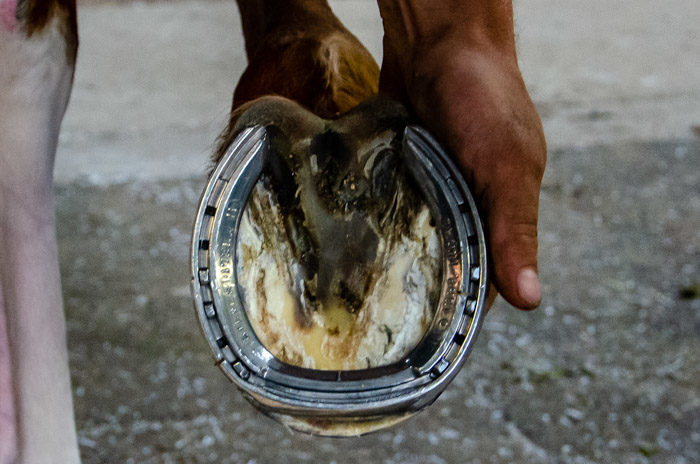The Horseracing Integrity and Safety Authority is delaying the implementation of federal Thoroughbred racetrack shoeing regulations, multiple sources within the racing industry have told American Farriers Journal.
Dr. Susan Stover, chair of HISA’s Racetrack Safety Committee, has informed multiple members of the farrier industry that the rules will now take effect Aug. 1, 2022. The rules originally were scheduled to take effect July 1. Stover, an International Equine Veterinarian Hall of Fame member from the University of California, Davis, could not be reached to confirm the change. An official statement from HISA is expected soon, sources say.
The rules drew criticism from some within the farrier industry over their vague language, the universal application on all Thoroughbred racetracks, as well as the short time frame for manufacturers and distributors to fill a large inventory void. The extension is being made to provide the industry with clarification on the new shoeing regulations, according to a source who did not wish to be identified.
Although clarification is necessary, the sources say the delay is critical for manufacturers and distributors of the racing plates.
“Given the significant change in the product mix stemming from the new rules, an extra 30 days will give both manufacturers and retailers additional time to adjust their production and inventories,” says Remco van der Linden, vice president of Thoro’Bred Inc. in Anaheim, Calif., who confirmed Stover contacted him about the date change.
The new shoeing rules, which can be found on Page 27, Section 2276 of the HISA Racetrack Safety Program, are brief and focus solely on traction devices.
“(a) Except for full rims 2 mm or less from the ground surface of the horseshoe, traction devices are prohibited on forelimb and hindlimb horseshoes during racing and training on dirt or synthetic racing tracks.
“(b) Traction devices are prohibited on forelimb and hindlimb horseshoes during training and racing on the turf.
“(c) Traction devices include but are not limited to rims, toe grabs, bends, jar calks and stickers.”
According to an American Farriers Journal survey, 58% disapproved of the new federally mandated shoeing rules while 42% approved. Much of the opposition is rooted in the blanket application of the shoeing rules while offering no latitude for variable climates, track surfaces or horses.
“We have deeper tracks like Belmont and Aqueduct that many feel traction is necessary, especially in the slop,” says Gary Gullo Jr., a Colts Neck, N.J., farrier. “They don’t call Belmont ‘Big Sandy’ for no reason.”
Traction devices at tracks such as these are necessary for the health and welfare of both the jockeys and horses, he adds.
“I’ve had veterinarians and trainers ask for more traction even while the horse was already wearing regular toe grabs during the meet because they were encountering soft tissue injuries from a lack of traction in deep or muddy track conditions,” Gullo says. “That’s why you see so many horses running in ¼-inch bends at Aqueduct, for instance. If you go to Monmouth Park, on the other hand, it’s not as deep as Belmont or Aqueduct. You won’t see horses running in ¼-inch bends as much. This is one of those things where the rules shouldn’t be one size fits all.”
The rules were put in place to improve the safety of the horses racing at tracks all across the United States.
“These new rules will decrease fatalities by detecting horses with mild pre-existing conditions through expanded veterinary oversight and the review of medication and treatment records and training histories,” according to a statement attributed to Stover. “They will also provide a window into understanding and preventing the development of mild injuries in the first place via uniform surface maintenance standards and ongoing data analysis.”
Learn More
- New Federal Horseshoeing Rules Create Controversy: Traction device ban sparks debate over horse health and concerns about race plate supplies.
- Equine Group Files a Federal Lawsuit to Halt the Horseracing Integrity and Safety Act: A Thoroughbred horse organization and affiliates in 11 states are suing to stop the Horseracing Integrity and Safety Act, calling its delegation of oversight to a private authority a violation of the United States Constitution.
- Horseracing Safety and Integrity Act Faces Another Federal Lawsuit: The legal challenges facing the Horseracing Safety and Integrity Act are mounting after a group consisting of two states, its racing commissions, two equine associations and a breeding farm filed a federal lawsuit alleging that the law is unconstitutional.









Post a comment
Report Abusive Comment